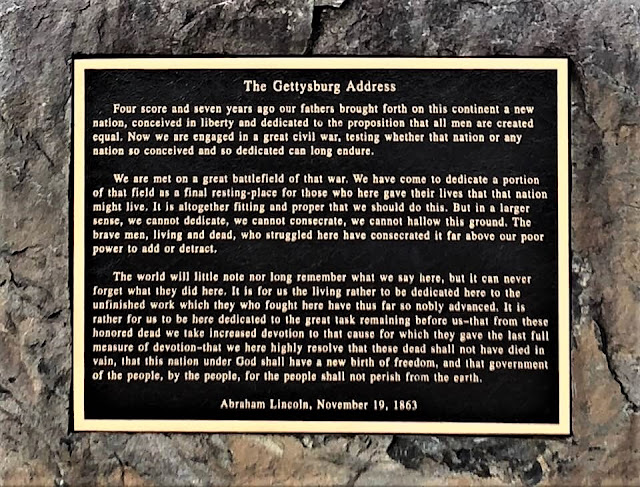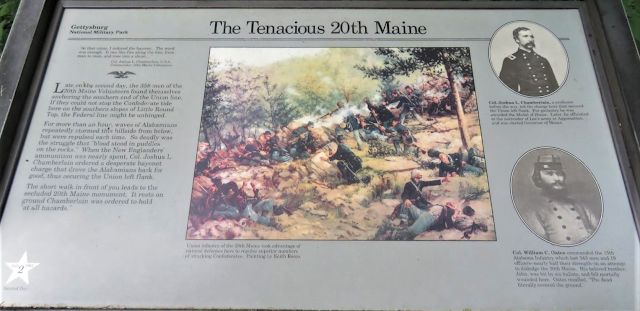The Memoir of J Frances Norman Collins
(Delivered at her service, July 19, 2018 by A.L. Collins)
“The Savior’s blood and righteousness,
My beauty is my glorious dress
Thus well arrayed I need not fear
When in His presence I appear”
Near midnight on Friday, July 13, 2018, Frances Norman Collins took her last breath and entered into the more immediate presence of her Lord and Savior Jesus Christ. Her earthly body was transformed into a spiritual body, her mind is now clear, her legs now work again, she is no longer in pain and every tear has been wiped from her eyes. Standing fearlessly adorned with the grace of Christ Jesus, she heard the words: “Well done good and faithful servant, enter into the joy of thy Lord”
The Bible tells us of a servant of the Lord named Joshua, who was commanded to lead the children of Israel across the Jordan into the promised land of Canaan. When the priests carried the Ark of the Covenant to the riverside, the river parted as they stepped into the water. With the Ark standing in the middle of the river, the children of Israel passed into the land of Canaan on a dry river bed. Joshua commanded that twelve stones be removed from the river bed and using them to erect an altar on the river bank saying: "That this may be a sign among you when your children ask in time to come, saying, 'What do these stones mean to you?' Then you shall answer them that the waters of the Jordan were cut off before the ark of the covenant of the LORD; when it crossed over the Jordan, the waters of the Jordan were cut off. And these stones shall be for a memorial to the children of Israel forever" (Joshua 4:6-7).
Standing stones have been used throughout antiquity and during the present day to proclaim significant events. Arrayed around us in God’s Acre is a Moravian version of standing stones. Recumbent white stones signifying the unity of death have been erected here for over two centuries. Each stone, the marker of a departed member of our denomination, proclaims the majesty of God through the life well lived.
My mother was born into an established Methodist family in Yadkin County but nevertheless, has many relatives buried in this place. The Collins family dates to 1838, but my mother’s great grandmother was Sarah Jane Vogler whose lineage dates to the founding of Salem.
Moravians have a peculiar custom. On the Saturday before Easter, we come to this place to clean and decorate the graves of family members. It is our custom to pass along an oral history of what we know of each family member. I have pondered during the last week, what her stone will mean to me? I wonder what story we shall tell of Frances Norman Collins.
She was born February 14, 1925, to Henry Arvil Norman and his wife, Bessie Reece Norman in the Smithtown Community in Yadkin County. Her father was a barber, store owner, horse trader, and farmer. He had the distinct talent of being a diviner, someone who could find water by holding a peach tree limb. Frances and her brother Ray were raised on a farm. She often told of how she avoided working in the fields by tending the general store. She would brag that she learned to drive a truck at age 13 and would pump gas in old timey glass canister pumps.
She got her faith from New Home Methodist Church and her education from East Bend School. At school, she was a good student and a member of the girls’ basketball team. She graduated in the 11th grade and went to Lenior Rhyne College for a year. In 1942, her life was forever changed by a blind date with a soldier boy from Winston-Salem, Harry Lee Collins, Jr. They fell instantly in love and not six months later, on September 7, 1942, they eloped to South Carolina and got married. She was 17 years old. He was 22 years old and AWOL from the Army.
After following him from base to base, she waited patiently for him as he was deployed overseas. Their first child, Rebecca Jean Collins was born May 6, 1944. In 1945, holding a baby doll, my father returned from war service to be greeted by Becky who exclaimed: “there is my sweet daddy with my baby doll!”
They initially resided in Smithtown in a house beside her parents. Frances and Harry both worked for R.J. Reynolds Tobacco Company. In 1951, they moved to 1220 Ebert Street in Winston-Salem and soon thereafter became members of Ardmore Moravian Church. On April 11, 1957, they were blessed with a son, Arvil Lee Collins, who was soon nicknamed “Buddy”. Moving to 2087 Hawthorne Road in 1958, they raised their family in the Ardmore Community. Their 60-year marriage ended in Harry’s death on January 20, 2003.
During their retirement, Frances and Harry moved to Kernersville living next door to their son and enjoying the love, laughter and energy of two of their grandchildren, Whitney Hunter (Gray) and David Collins. She was also very proud of her granddaughters, Tori Whalen and April Manuel (Keith) whom she spoiled with love, affection and constant attention. Always available for a chat, a meal or just a phone call, Frances remained a part of their lives until her death.
Her long life allowed her to see two great-grandchildren, Heather Millsaps (Ryan Moore) and Bay Routh graduate from college and began their careers. Great-grandchildren, Will Hunter, and Salem Hunter are young children but were showered with her love during frequent visits with her at Trinity Elms Retirement Center in Clemmons.
Forsaking public work at R.J. Reynolds Tobacco Company in 1957, Frances became a homemaker and a fantastic cook. She was a friend to many and loved by all who were embraced by her gentle spirit. While active in many church, school, and civic endeavors, Frances and Harry found their greatest joy as members of the Camel Caravan and Airstream travel trailer clubs where they made a host of friends as they traveled throughout the country.
The Apostle Peter instructed early Christians to be like Jesus and become living stones. No doubt daily proclaiming what inanimate stone altars once proclaimed. Peter explains: “But you are the ones chosen by God, chosen for the high calling of priestly work, chosen to be a holy people, God’s instruments to do his work and speak out for him, to tell others of the night-and-day difference he made for you” (1st Peter 2:9-10)
Frances Collins was not only a living stone, she was our rock.
What we know about love, we learned from her. We often would say to her in her last days: “I love you” To which she would reply: “I love you more” - something we never really doubted. For you see she taught us that love is not a noun. It is not something that is done to you. No, love is a verb. It is something you do for others. If you met her, you were loved by her.
What we know about faith, we learned from her. She taught us that faith means “putting your full confidence in things hoped for…being certain of things we cannot see…” (Hebrews 11 1,6). She often told us that “there is nothing going to happen to me today that me and my Lord can’t handle”. She lived her faith in a life of quiet confidence, resilience, and patience.
What we know about hope, we learned from her. Life taught her that “patient endurance develops a mature character and a character of this sort produces a steady hope.” (Rom. 5:4-5) That hope was conveyed to us by her unquestioned belief in each of us. Sometimes it was conveyed by a gentle word of encouragement, other times all it took was a stern look of expectation, but it always was accompanied by a warm embrace. At times when we did not believe in ourselves, we found that she believed in us, and somehow that was enough to keep us going.
She not only did this for her family but did it for others as well. A few years ago, a first-grade classmate contacted me soon after my Mom entered assisted living. She explained that as a young girl she always looked up to my Mom whose only contact with her was when Mom served as an elementary school grade mother. My friend explained: “She always made me feel special and that is a feeling that gives you eternal warmth when thoughts turn to that person. I expect that she had that effect on more than a few and in my opinion, that's a pretty significant legacy to leave behind.”
Some years ago, I heard Dr. Billy Graham respond to a question about heaven. He was asked if he expected his dog to be in heaven with him. Dr. Graham responded by saying that he believed that heaven was a place where his every joy would be fulfilled. And, if God believed to have his dog with him would accomplish that, then he expected to see his dog in heaven. So, I began to ponder what heaven must be like for my mom.
Ruth Briles Martin, one of our Camel Caravan Trailer Club children, and I discussed the happy reunion that must be taking place as she joined her Camel Caravan friends around a large campfire, eating doughboys roasted over the fire, swapping stories and singing Gospel hymns. Heaven will only be complete for my Mom if she is surrounded by her friends.
Her joy would not be complete without my father. For 60 years they lived a fairytale love affair. They worked together, laughed together, cried to together, danced and traveled. While they were very different, their lives meshed together in a way that completed them both. Heaven will only be complete for her if they are reunited.
Still, the one thing that brought my Mom the most joy was being with her family. We gathered together often on holidays and birthdays. She embraced that time and soaked in the laughter and the love that surrounded her. Her joy will not be complete until we can be with her again.
The writer of Hebrews observes: “Therefore, since we are surrounded by such a great cloud of witnesses, let us throw off everything that hinders and the sin that so easily entangles, and let us run with perseverance the race marked out for us.” (Heb. 12:1).
Her eternal hope for us is that we will respond to that small voice within our souls. That we will grow in faith. That we shall run the race before us with the same perseverance we have witnessed in her life. And, that one day we too may join with her before the throne of grace, fearlessly adorned in righteousness, and hear those words: “Well done faithful servant. Well done indeed!”
Frances Norman Collins was born February 14, 1925. She died July 13, 2018. She was 93 years old.
A long life…well lived…we are blessed.
Thanks be to God. Hallelujah! Amen.
















































































